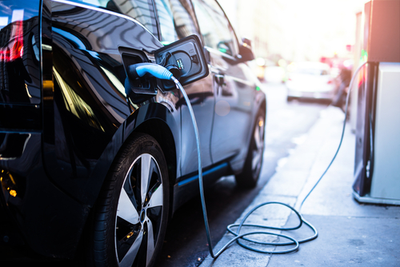President Joe Biden has taken a firm stance on where he stands with the automotive industry and electric vehicles.
With the threat of climate change looming over political talking points, the conversation around electric vehicles (or EVs) has been charged up and there is a strong likelihood that they will eventually dominate the automotive industry eventually.
With that said, what does President Biden’s stance mean for current gas-powered vehicle owners and the return of the federal Cash For Clunkers program?
President Biden’s Views On Electric Vehicles
First, let’s dive into Biden’s thoughts on EVs and where they fit into his plan for combating Climate Change.
The Biden Administration has set a goal that half of all vehicles sold by 2030 to be EVs.
With an audacious goal like that, they’ve garnered the support of much of the automaking industry. However, they face a bevy of obstacles including infrastructure and incentivizing the public to purchase EVs.
One large initiative that the President wants to push forward is replacing the United States’ entire fleet of government vehicles with electric vehicles manufactured here in the United States.
Within his projected plan, Biden says that the government will provide the demand and grants to revamp factories.
This will enable automakers and suppliers to expand capacity with the support of the U.S. government so that the United States will lead the world in zero emission vehicle production.
With this initiative also comes the boost in infrastructure that looks like half a million new EV charging stations.
Rebate Incentives For Less-Fuel Efficient Vehicles
The portion of Biden’s plan that would impact current drivers the most is the idea to incentivize swapping out gas-powered vehicles for American-made EVs.
This proposal is reminiscent of the 2009 Cash for Clunkers program, but details on how much the incentives might be or what the threshold for what qualifies as “poor fuel efficiency” is have not been shared.
What Is Cash For Clunkers?
The Cash for Clunkers program, officially known as “The Car Allowance Rebate System,” was initially a government incentive program initiated in response to the 2008 recession.
The program focused on purchasing older, inefficient vehicles in exchange for up to $4500 with the expectation that a newer, fuel-efficient model would be purchased.
The program ran from July 1, 2009 to nearly the end of the following November and distributed $3 billion to participants.
The program succeeded in stimulating the market, while also removing 700,000 vehicles from the road. However, critics of the program noted that it caused cars that could have been used by low-income drivers to be unnecessarily scrapped.
Furthermore, Kelley Blue Book data says the reduction in the overall population of vehicles resulted in higher used car prices.

Will There Be A Cash For Clunkers Program In 2022?
Understanding the fundamental difference between the original Cash for Clunkers and any iteration under this administration is key.
The former was orchestrated to jumpstart a market recovery after said market experienced a sales collapse of 40%. The newer version would be an environmental effort whose benefits would not be immediate, per se.
The goal is to galvanize the sales of electric vehicles, which account for an estimated 2% of the current vehicle fleet in the United States.
COVID-19 shutdowns impacted car sales in 2020 incredibly, but they quickly rebounded to the levels they were at prior to the pandemic.
That said, production cutbacks and microchip shortages due to the coronavirus has led to a vehicle scarcity that has caused vehicle prices to shoot up (and yield more profit for sellers).
While there are plays in motion to account for the infrastructure expansion, the bread-and-butter in regards to EVs is the $7,500 federal EV tax credit.
If you have a vehicle that qualifies, you are able to receive the tax credit. The qualifications at this point are:
- It has to have four wheels.
- It can't weigh more than 14,000 pounds.
- It has to have a battery that provides 4 kilowatt-hours (kWh) or more of power.
- It must be able to be charged from an external source – that is, a plug.
While the tax credit is helpful, it isn’t the Cash for Clunkers program consumers are clamoring for.
People on both sides of the aisle are loudly proclaiming why the program should or should not see a revival.
Proponents know that it would hasten the adoption of electric vehicles and move everyone away from the era of combustion engines. The overall fuel efficiency of the United States’s fleet would enjoy a boost, while the price differential between more expensive EVs and the conventional vehicles will nearly be eliminated.
Opponents highlight the scrapping of viable, low-priced vehicles that low-income drivers could make use of. Furthermore, the program would jack up the prices of used vehicles, making the vehicles worth more than the government is actually willing to pay for them.
CarBrain Pays For Cars In Cash
If you’ve got a less than perfect vehicle you’re looking to get off your hands, then CarBrain is here for you. We kickback a quote within 90 seconds, offer free towing, and free title transfers.
If you’re looking to offload a gas guzzler and upgrade to an electric, let us put the money in your hand to go towards that today!




